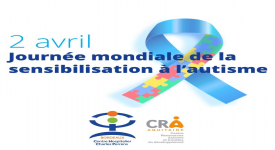J Med Internet Res. 2024 Apr 30;26:e54706. doi: 10.2196/54706.
ABSTRACT
BACKGROUND: There is a dearth of feasibility assessments regarding using large language models (LLMs) for responding to inquiries from autistic patients within a Chinese-language context. Despite Chinese being one of the most widely spoken languages globally, the predominant research focus on applying these models in the medical field has been on English-speaking populations.
OBJECTIVE: This study aims to assess the effectiveness of LLM chatbots, specifically ChatGPT-4 (OpenAI) and ERNIE Bot (version 2.2.3; Baidu, Inc), one of the most advanced LLMs in China, in addressing inquiries from autistic individuals in a Chinese setting.
METHODS: For this study, we gathered data from DXY-a widely acknowledged, web-based, medical consultation platform in China with a user base of over 100 million individuals. A total of 100 patient consultation samples were rigorously selected from January 2018 to August 2023, amounting to 239 questions extracted from publicly available autism-related documents on the platform. To maintain objectivity, both the original questions and responses were anonymized and randomized. An evaluation team of 3 chief physicians assessed the responses across 4 dimensions: relevance, accuracy, usefulness, and empathy. The team completed 717 evaluations. The team initially identified the best response and then used a Likert scale with 5 response categories to gauge the responses, each representing a distinct level of quality. Finally, we compared the responses collected from different sources.
RESULTS: Among the 717 evaluations conducted, 46.86% (95% CI 43.21%-50.51%) of assessors displayed varying preferences for responses from physicians, with 34.87% (95% CI 31.38%-38.36%) of assessors favoring ChatGPT and 18.27% (95% CI 15.44%-21.10%) of assessors favoring ERNIE Bot. The average relevance scores for physicians, ChatGPT, and ERNIE Bot were 3.75 (95% CI 3.69-3.82), 3.69 (95% CI 3.63-3.74), and 3.41 (95% CI 3.35-3.46), respectively. Physicians (3.66, 95% CI 3.60-3.73) and ChatGPT (3.73, 95% CI 3.69-3.77) demonstrated higher accuracy ratings compared to ERNIE Bot (3.52, 95% CI 3.47-3.57). In terms of usefulness scores, physicians (3.54, 95% CI 3.47-3.62) received higher ratings than ChatGPT (3.40, 95% CI 3.34-3.47) and ERNIE Bot (3.05, 95% CI 2.99-3.12). Finally, concerning the empathy dimension, ChatGPT (3.64, 95% CI 3.57-3.71) outperformed physicians (3.13, 95% CI 3.04-3.21) and ERNIE Bot (3.11, 95% CI 3.04-3.18).
CONCLUSIONS: In this cross-sectional study, physicians' responses exhibited superiority in the present Chinese-language context. Nonetheless, LLMs can provide valuable medical guidance to autistic patients and may even surpass physicians in demonstrating empathy. However, it is crucial to acknowledge that further optimization and research are imperative prerequisites before the effective integration of LLMs in clinical settings across diverse linguistic environments can be realized.
TRIAL REGISTRATION: Chinese Clinical Trial Registry ChiCTR2300074655; https://www.chictr.org.cn/bin/project/edit?pid=199432.
PMID:38687566 | DOI:10.2196/54706




